Category: WMD
Guardsmen train alongside 3 rural Idaho fire departments
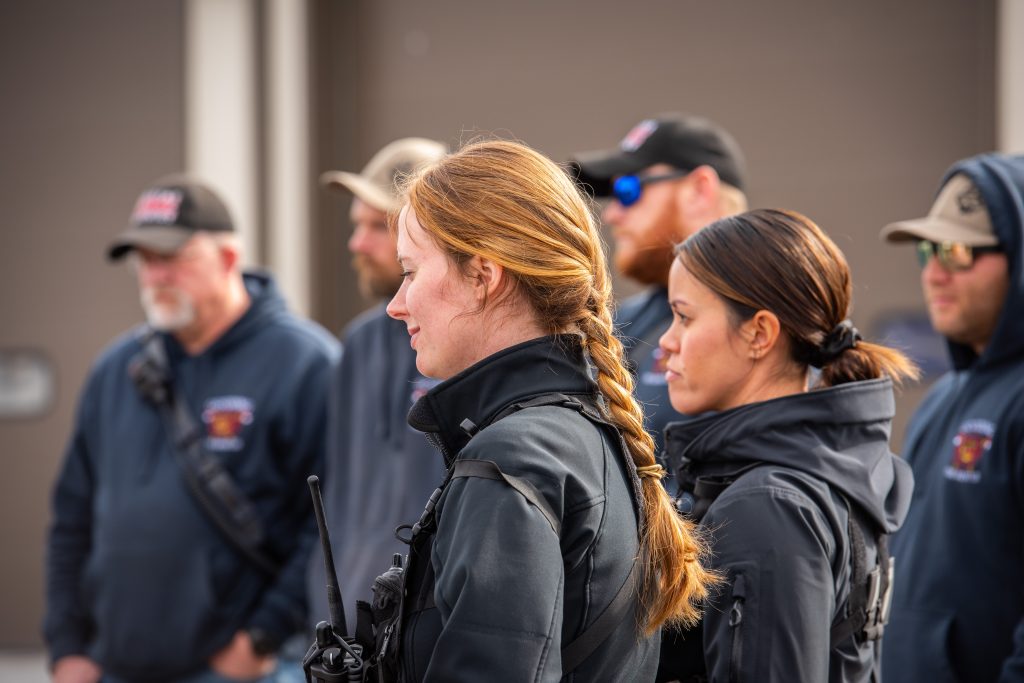
The Idaho National Guard’s 101st Weapons of Mass Destruction Civil Support Team trained alongside firefighters from Gooding, Bliss and Hagerman Feb. 2 in Gooding, Idaho. The training was designed to provide a better understanding of how first responders in these small rural Idaho towns can integrate the CST’s assets and expertise with their own to enhance effectiveness in emergency situations where hazardous materials or chemicals may be a key consideration.
Kevin Hungate, a U.S. Department of Energy regional manager for Radiological Assistance Program Team 6, was on site to observe the training as well. He said building relationships with Idaho’s first responders is key to more effective integration if they ever find themselves working together in a real-world scenario in the future.
“Training evolutions like this give us the opportunity to meet these other agencies and build trust,” said Hungate. “These are really good relationship building tools for us.”
The training began with a capabilities brief and tabletop exercise to help familiarize the firefighters with the ways in which the CST can help departments evaluate and contain affected areas, freeing up first responders to focus on more immediate tasks or emerging threats.
The CST Guardsmen then provided a live demonstration of specialized technology and techniques they use to scan and detect potentially harmful chemical agents and radiological sources. The exercise wrapped up with a demonstration of personnel decontamination procedures as they exited a notional “hot zone.”
Gooding Fire Chief Steven Bishop said the training was valuable to him and his firefighters.
“I wasn’t aware of this team at all until they called and talked to us,” said Bishop. “We have limited capabilities in this area, so this is very beneficial to hear about. It’s another resource we can use in certain types of situations that we didn’t have before.”
The 101st WMD CST is capable of providing around-the-clock response and support to requesting first responders and can provide identification of chemical, biological and radiological agents; recommendations for mitigation, medical treatment and follow-on resources; and on-site communications connectivity.
Lt. Col. John McDaniel, commanding officer of the 101st, said the unit’s outreach program is designed to help foster relationships and build on mutual understanding of each agency’s capabilities, limitations and operational demands to enhance their ability to work together effectively in times of crisis.
“Any time we have a chance to work with emergency managers from our neighboring communities, that’s a huge win for us and for the community,” said McDaniel.
Boise firefighters train Idaho’s Civil Support Team on rope rescue
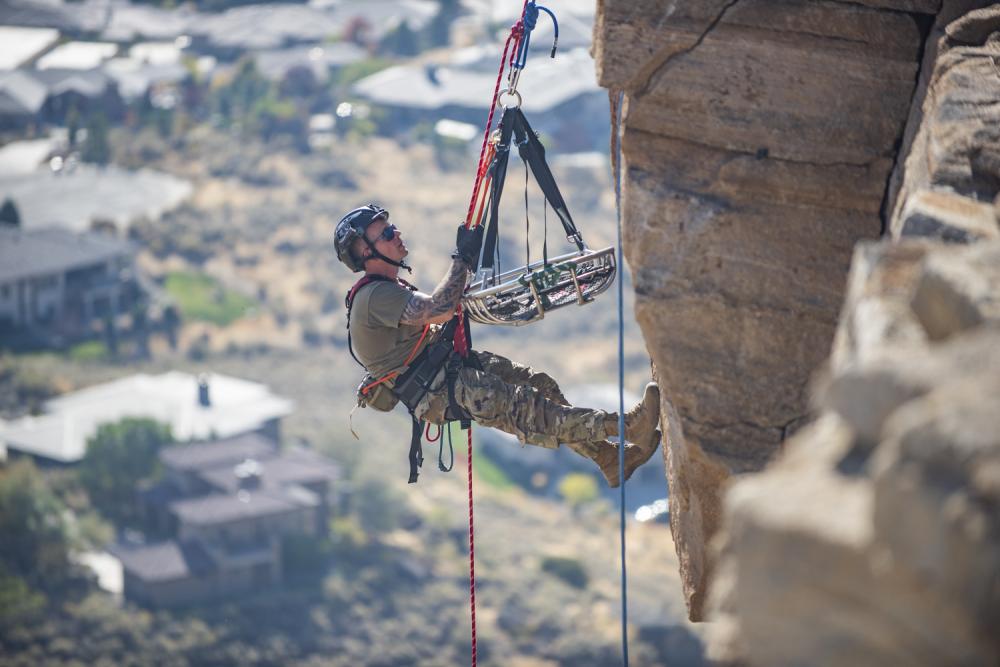
Throughout the month of October, the Idaho National Guard’s 101st Civil Support Team partnered with the Boise Fire Department Technical Rescue Team to participate in a ropes rescue course taught by Boise firefighters. The course, which served as an annual recertification for the CST Guardsmen, entailed two weeklong sessions for the 22-member team and helped the Boise firefighters refine their skills as trainers.
“This training benefits both the Idaho National Guard and us,” said Brent Matthews, captain of the Boise Technical Rescue Team. “Not only are we certifying our partners on ropes rescue training, but our instructors also get valuable experience and more proficient as certifiable instructors.”
The first week, Oct. 10th through the 14th, started with the classroom portion of learning about ropes rescue as a prerequisite for the hands-on portion of the training. Using what they learned about the ropes, the CST Guardsmen rappelled from tops of buildings at the Boise Fire Department’s Fire Training Center.
Once the Guardsmen were proficient at ropes rappelling, they practiced ropes rescues using wire rescue baskets at cliffs near the Table Rock trails in the Boise foothills to simulate a large-scale rescue of multiple people.
“To utilize the CST in ropes rescue, there would be an instance where something serious happened like a natural or man-made disaster or an emergency where the local search and rescue team wouldn’t have enough resources and could call us,” said Lt. Col. Robert Grimes, 101st CST commander.
The second weeklong training, Oct. 24th through 28th, focused on confined space rescues at Boise’s Lucky Peak Power Plant. The training mirrored a scenario where a devastated occurrence or a large-scaled catastrophe, like an earthquake, happened with severe damage to a building that could involve chemicals. This would require HAZMAT precautions, along with a large number of rescues in buildings with confined spaces, and would involve ropes and sked stretchers.
These incidents could be intensified by a lack of oxygen that is available in a non-ventilated area and complicated by the tight confines of the space, requiring rescuers to have air tanks during a rescue.
“Confined space is a rescue of people, for instance, inside of a building, in a tunnel or inside tanks where there could be a HAZMAT situation. They might be injured too badly to get out on their own or they could be unconscious,” said Grimes. “The CST has the capability to respond to weapons of mass destruction and HAZMAT scenarios already. The ropes rescue and confined space training adds another capability for the CST to assist the local fire departments and local agencies.”
The Boise Fire Department Technical Rescue Team is highly trained to handle the emergencies involving ropes rescues and confined space rescues, however, they could call upon their 101st CST partners if the large number of rescues surpassed their limit.
“We’ve been building this relationship and working together for quite a while,” said Matthews. “The CST has really great HAZMAT capabilities. Having the CST already trained at HAZMAT, plus the ropes rescue and confined space training, benefits us as well. In the future, I’d like to see us integrate more in real-world situations. When we have a HAZMAT call with confined spaces, we can call them to assist. I can see us working really closely together in the future.”
Idaho Guard partners in multi-agency all-hazards exercise
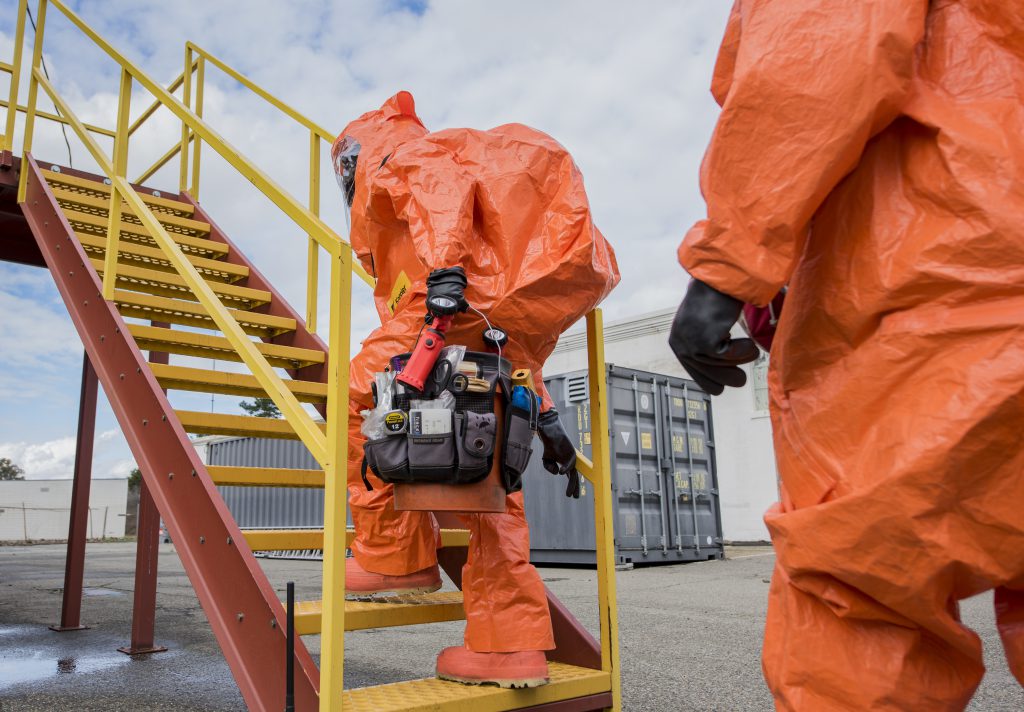
Crystal Farris/Idaho Military Division Public Affairs
The Idaho National Guard’s 101st Weapons of Mass Destruction Civil Support Team partnered with CSTs from 11 other states, along with more than ten different local and federal agencies and organizations, during Exercise ORCA 2021, to train in responding to various hazardous material incidents throughout Alaska, May 17 to 20.
The all-hazards exercise that took place simultaneously in Anchorage, Matanuska-Susitna Valley and Seward, involved the largest turnout of CST participants to an ORCA exercise, helping the 101st CST and other emergency responders maximize training opportunities while testing interagency coordination, interoperability and response abilities.
“It is important that we practice deployment operations and integration with other teams through exercises to ensure a rapid, timely and integrated response to a real-world threat,” said Capt. Jessica McBride, 101st CST survey team leader.
During the exercise, CSTs coordinated and worked through various scenarios, including identifying illicit and dangerous substances and responding to simulated attacks and disasters.
The 101st CST responded to the Anchorage Fire Training Center, which for the exercise simulated a residential six-story apartment building with approximately 20 rooms where terrorists prepared weapons of mass destruction.
“We were called in to conduct a relief-in-place of Alaska’s 103rd CST after it established perimeters with safe zones and threat zones, and then started site characterization of the building itself,” said Capt. John Bomsta, 101st CST operations officer. “We assisted in finishing the site characterization, describing what the building looked like and the possible threats we found. There was something to be found in every room and a lot of area to cover.”
Once on scene, the 101st CST worked through the night for approximately 12 hours continuing site characterization and field analysis of the building. During that time, it located five lab setups including a drug lab, a homemade explosives lab and a potential nerve agent lab. Rooms also had trips wires, motion detectors and confined spaces.
“We were able to provide field analysis of what we saw in the building in order to push information up to higher, which in this case was the FBI as incident command, on what they should look for at other sites,” said Bomsta. “As the story developed, other CSTs were located as far south as Seward, also responding to various terrorist threats in their vicinities.”
CSTs from Alaska, California, Connecticut, Colorado, Ohio, Oregon, Rhode Island, South Carolina, South Dakota, Washington and Wisconsin attended, in addition to other National Guard units such as Colorado’s 8th CBRN Enhanced Response Force-Package and members of Alaska’s 176th Civil Engineer Squadron.
Local agencies and organizations included Alaska Department of Homeland Security and Emergency Management, Matanuska-Susitna Emergency Management, Alaska Department of Environmental Conservation, Major Marine Tours, Alaska Railroad, Anchorage Fire Department, Alaska State Emergency Operations Center, University of Alaska-Anchorage, Port of Seward and the Port of Alaska-Anchorage.
“The exercise was designed with scenarios based on what all the participating CSTs had communicated they wanted to see and tasks they wanted to accomplish,” said Maj. Robert Grimes, 101st CST commander. “Our team was able to achieve various objectives, including integrating with other CSTs and civil responders to build those relationships and learn each other’s capabilities and limitations.”
Unlike most other military units, CSTs work almost entirely alongside civilian agencies, including regional hazardous response teams, police, firefighters and other state or federal responders that function under an incident command system during emergency situations. Grimes said developing these partnerships make training scenarios like Exercise ORCA 2021 critically important.
“What we do as an individual team is just one portion of what it takes overall to respond to a real-world event like this,” said Grimes. “We train to provide the best support we can to civil authorities in the event of a domestic chemical, biological, radiological or nuclear high-yield explosives incident.”
As one of 57 teams located in every U.S. state and territory, the 101st CST is composed of 22 highly skilled full-time Army and Air National Guardsmen trained to provide incident and disaster management by identifying CBRNE agents and substances, assessing current or projected consequences, advising on response measures and assisting with appropriate request for additional follow-on state and federal military forces.
As part of Idaho’s emergency response structure, the unit is prepared and ready to respond at any time to hazardous incidents that threaten the community, state and nation and are often called upon state-side to assist in public safety events including sports games and governor inaugurations.
Idaho Civil Support Team trains with California, Oregon and Nevada’s CST units in the San Francisco Bay Area
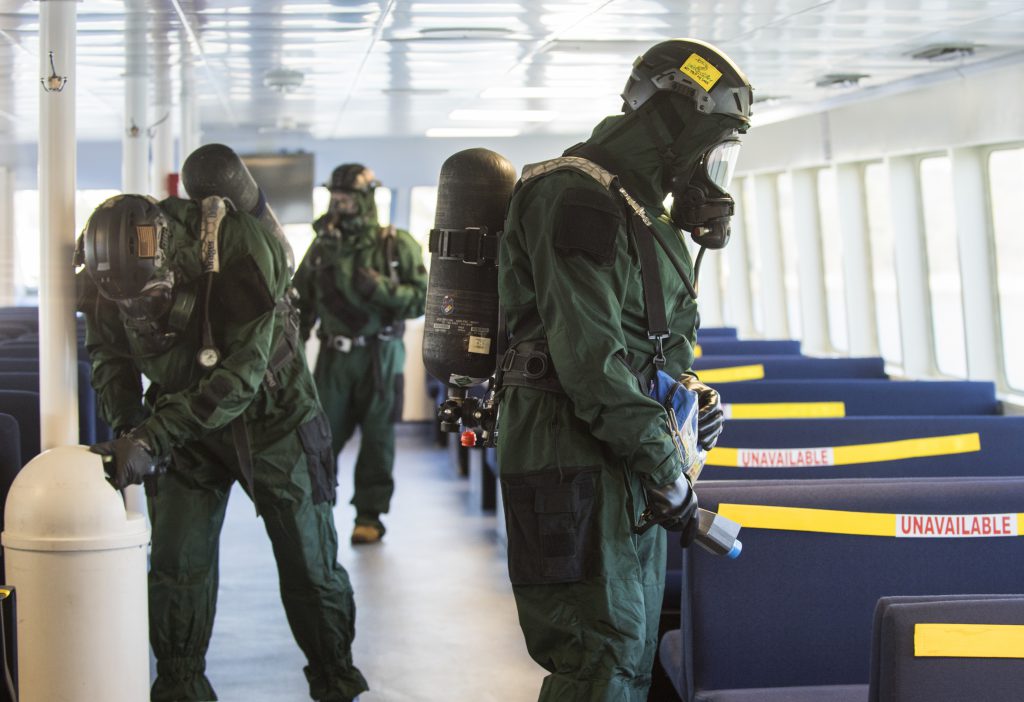
By Master Sgt. Becky Vanshur – Idaho Military Division Public Affairs
SAN FRANCISCO BAY AREA, Calif. – The Idaho National Guard’s 101st Civil Support Team was among several National Guard CSTs that participated in a large-scale exercise in Northern California Feb. 1-5.
The exercise, BAYEX 2021, tested the ability of Idaho, Oregon and Nevada CST teams to assist the California National Guard’s 95th CST while responding to training scenarios in the Bay Area involving weapons of mass destruction emergencies.
“This exercise gives us valuable training in our ability to respond to a chemical, biological, radiological or nuclear event,” said Lt. Col. Christina Taylor, commander of the 101st CST. “We have taken significant actions to ensure the 22 Soldiers and Airmen of the CST have the opportunity to continue to refine their skills in collective training exercises such as BAYEX.”
To initiate the exercise, biologically actionable results were simulated inside an abandoned military facility and a transit boat transporting people around the San Francisco Bay Area. The hazardous agent triggered phase one sampling, which resulted in federal agencies requesting support from the National Guard’s civil support teams. Civil support teams work closely with law enforcement and first responders, including the FBI, Department of Homeland Security and explosive ordnance disposal teams.
“It is important for every state’s governors and the nation to know that in the event of a small or large-scale emergency, the CST units are designed to respond and support local and federal civilian agencies,” said Taylor.
The Oregon National Guard’s 102nd and the Nevada National Guard’s 92nd CST also supported the California National Guard’s 95th CST training exercise.
“I truly enjoyed participating in this event,” said Staff Sgt. Troy McDonald, 101st CST survey team chief. “The exercise allowed our team to interact with other CST members and cross-train with each other, sharing best practices and procedures.”
Participating in large-scale exercises helps the 101st CST remain ready to respond to emergencies throughout Idaho and the nation. The unit supports civil authorities at domestic incident sites, which may involve areas affected by terrorism or natural disasters.
“It is vital to continue training for emergencies even as the global COVID-19 pandemic continues,” said Taylor. “It’s imperative that the Idaho National Guard civil support team remains trained and ready to respond at all times to our local community, as well as neighboring states, in the event of a large-scale real-world HAZMAT emergency.”
101st CST trains with Nampa Police Department
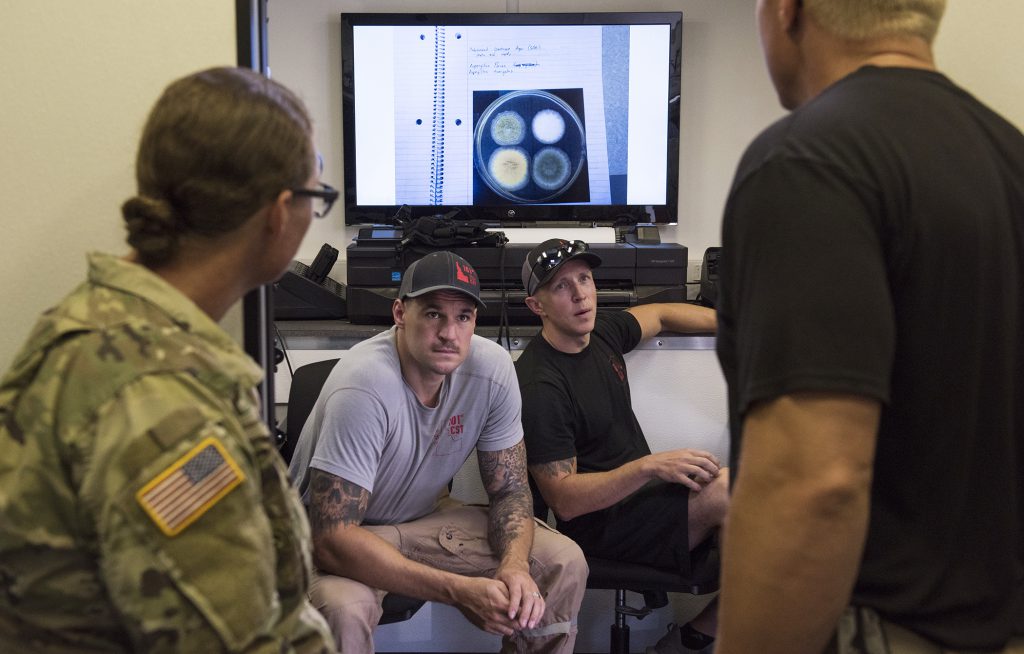
Capt. Robert Taylor
Idaho Army National Guard
NAMPA, Idaho – Soldiers and Airmen from the Idaho National Guard’s 101st Weapons of Mass Destruction Civil Support Team responded to a training incident in Nampa to support the Nampa Police Department July 24.
The training event, held at the empty building that formally housed the Mercy Medical Center, tested the unit’s ability to deploy without notice to a local incident. The Nampa Police Department requested the 101st CST support to complement its own training at the facility simultaneously.
“It’s good to know what support we have nearby so we’re not having officers putting themselves into dangerous situations when we have other resources available,” said Nampa Police Department Sgt. Jason Cantrell.
The training scenario focused on a chemical lab that was discovered while the Nampa Police Department investigated reports of suspicious behavior. The department requested the 101st assistance because the regional hazmat team was unavailable, a scenario that could happen in the event of a real-world incident.
Cantrell explained it was more practical and safe to request support from the 101st to investigate unknown chemical agents than to send a police officer into the building wearing a gas mask. The 101st was able to report to the scene in less than two hours after notification.
The 101st trains year-round and often with local first responder agencies. The 22-person team is one of 57 CST units in the National Guard across the country. Each team provides unique expertise and capabilities to assist state governors in preparing for and responding to chemical, biological, radiological or nuclear incidents and natural disasters as part of each state’s emergency response structures.
“It’s nice to build relationships with first responders so we can put faces to names if there is a real-world event,” said Sgt. 1st Class Richard Bachmeier, the unit’s communication section chief.
The 101st has worked with the Nampa Police Department on real-world missions in the past. In March, the unit responded to the same parking lot after the Nampa Police Department received a bomb threat involving a nearby apartment complex. Units did not find any suspicious items or substances and police arrested a suspect in connection to the threat.
In February 2018 the 101st and Nampa Police Department worked together with other local agencies in a large-scale training event at the Ford Idaho Center.
“We enjoy our relationship with the 101st,” Cantrell said. “Training together allows us to be able to get a better understanding of their capabilities and operating procedures to facilitate something of this magnitude.”
Local law enforcement agencies train for dangerous incidents
Idaho National Guard partners with state, federal agencies to provide safe Boise State game day experience
101st Civil Support Team prepares for upcoming evaluation
Click here to read more: 101st Civil Support Team prepares for upcoming evaluation
Multiple Agencies train for mass destruction
Click here to read more: Multiple Agencies train for mass destruction
 Official Government Website
Official Government Website